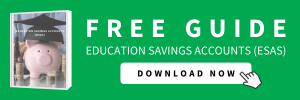Get Schooled on Self-Directed Education Savings Accounts
Published on September 10, 2020
There are several investment/savings options available to individuals who want to give the gift of education to children. An education savings account (ESA) is an excellent supplement to other education savings (such as a 529 plan) with tax advantages. Also called a Coverdell Education Savings Account, this is a trust account created by the U.S. government.
An ESA may be used to cover qualified expenses related to primary, secondary, or higher education, from kindergarten through college or post-secondary trade school. Withdrawals are tax free (free from federal income tax) when used for eligible expenses. These include tuition, books and supplies, computers/equipment, transportation, school fees, and room & board. Children attending public school or private school may use the funds for qualified expenses.
Self-directed ESA investments
As with any other type of self-directed plan, an education savings account can include a range of alternative assets. Depending on need and time horizons for taking qualified withdrawals, there are opportunities to boost the $2,000 annual contribution limit through nontraditional investments such as private equity, secured and unsecured loans, real estate, precious metals, and many more.
For example:
Baby Sarah’s grandparents want to contribute to her education and open a self-directed ESA – they can contribute up to $2,000 annually. Sarah’s parents are also putting money away for the baby’s education. They plan to register her into public elementary school but may consider private middle/high school.
Every year, Sarah’s grandparents contribute $2,000 into her ESA, and begin investing the funds in an alternative asset with which they have years of experience.
As the value of Sarah’s ESA grows beyond the $2,000 annual contributions, she will have funds to use for books and supplies or can withdraw funds to cover tuition costs at a private high school or for college, to supplement her parents’ savings. Plus, her grandparents can continue to contribute to the ESA until Sarah turns 18—and continue to diversify the accounts’ holdings through other self-directed investments they already know and understand.
Their $36,000 gift over those 18 years can grow exponentially through the power of nontraditional investments not typically affected by the stock market, provide Sarah with more money to use for her education, and give mom and dad a little help along the way.
ESA facts
- Contributions may be made for beneficiaries until they turn 18; funds must be used within 30 days of the student turning 30 years old. (There are certain exceptions for special needs students.)
- The funds in the account can be transferred into another ESA for a relative under 30 years old.
- The total maximum contribution for any single beneficiary (even with multiple education savings accounts) is $2,000 per year.
- Contributions are considered gifts by the IRS and are not tax deductible.
- There are income guidelines regarding who may contribute. The 2020 limits are as follows:
- For a married couple filing jointly with modified adjusted gross income (MAGI) between $190,000 and $220,00, a partial contribution is permitted; for those with less than $190,000 MAGI, the full $2,000 contribution is permitted.
- Solo tax filers must have MAGI of $95,000-$110,000 to make a partial contribution, and less than $95,000 MAGI to make the full $2,000 contribution.
- Corporations and trusts may contribute to an ESA without the restriction on adjusted gross income.
- There is a 10% IRS penalty on earnings (with certain exceptions) for non-qualified withdrawals.
If you have questions about how to get started or about the alternative assets allowed in self-directed accounts, you can schedule a complimentary educational session with one of our knowledgeable representatives. Alternatively, you may contact us at directly via phone at 888.857.8058 or send an email to NewAccounts@NextGenerationTrust.com.




